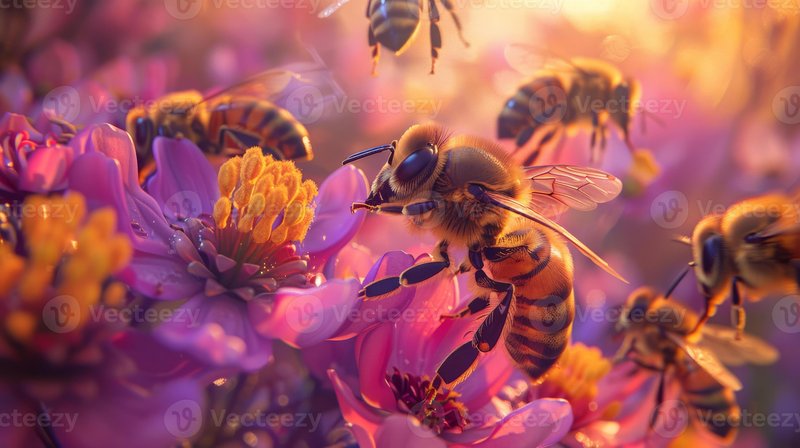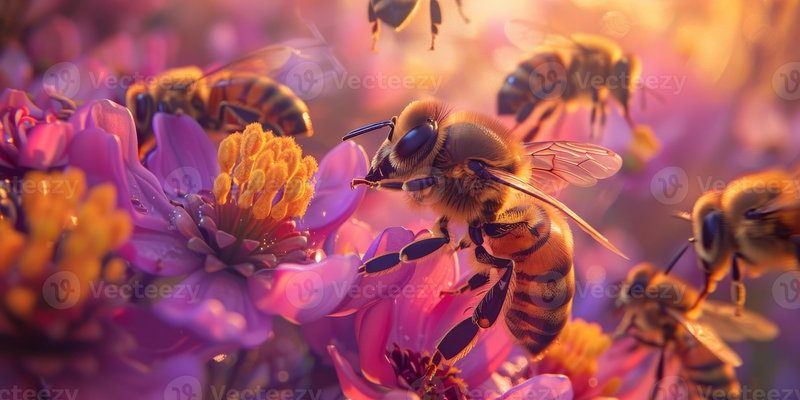
So, what exactly is a mining bee? Let me break it down for you. Mining bees belong to the Andrena family and are known for their unique nest-building habits. Instead of living in hives like honeybees, they create individual nests in the ground. They’re not just any bees; they’re also incredibly efficient pollinators, often overlooked in favor of their more famous cousins. Knowing more about their role in pollination can deep-dive into understanding how they contribute to our daily lives, the environment, and biodiversity.
The Importance of Pollination
Pollination is essentially nature’s matchmaking service for plants. Without it, flowering plants wouldn’t be able to reproduce effectively. This process is vital for producing fruits, seeds, and nuts, which are food sources for many species, including humans. Think of pollination as a relay race: the mining bee picks up pollen from one flower and delivers it to another, allowing the plant to create seeds. Without these busy pollinators, our grocery store shelves would look a lot more barren.
Here’s the thing: many plants have adapted to rely on specific pollinators. While some flowers attract honeybees, others have evolved to attract mining bees. This creates a diverse web of interactions between plants and their pollinators, ensuring that ecosystems flourish. A decline in these pollinators could lead to a domino effect, impacting not just individual plant species but entire ecosystems.
Mining Bees: A Quick Overview
Mining bees are solitary insects that belong to the family Andrenidae. There are around 1,000 species of mining bees, varying in size, color, and habitat preferences. They typically dig nests in the ground, hence the name “mining.” These nests can often be found in sandy or loose soil, which makes it easier for them to create their underground homes.
Unlike honeybees, mining bees do not produce honey or live in colonies. Instead, each female mining bee is a one-woman show, laying her eggs in the nest she constructed. This solitary lifestyle leads to a stronger focus on pollination efforts, as these bees visit numerous flowers every day to gather nectar and pollen for feeding their young. It’s fascinating to think about how their unique nesting behaviors not only support their own survival but also contribute to the overall health of the ecosystem.
How Mining Bees Pollinate Plants
The process involves a bit of a dance. When mining bees visit flowers to collect pollen, they inadvertently pick up pollen grains on their bodies. As they move from flower to flower, they deposit this pollen, helping fertilize the plants. This cross-pollination is essential for many plants to produce fruits and seeds.
Here’s a cool fact: mining bees have fuzzy bodies, which makes them excellent at picking up and transferring pollen. While visiting flowers, they engage in a behavior called “buzz pollination.” This is where they vibrate their bodies to shake pollen loose from flowers that have a tighter grip on their pollen grains. It’s like they have their very own technique for getting the job done efficiently.
The Benefits of Mining Bees in Agriculture
Mining bees aren’t just helpful in wildflower meadows; they also play a significant role in agriculture. Many crops, such as apples, blueberries, and almonds, rely on effective pollinators for a good yield. The presence of mining bees in agricultural fields can lead to higher crop production, improved quality of fruits, and a more resilient farming landscape.
Farmers who understand the importance of these little bees often cultivate environments that encourage their presence. This includes providing diverse flowering plants around fields and minimizing pesticide use, which can harm these essential pollinators. By fostering a healthy environment for mining bees, farmers can enjoy the benefits of increased yields while supporting biodiversity.
Threats to Mining Bees and Their Habitat
Sadly, mining bees face numerous threats today. Habitat loss is significant, mainly due to urbanization, agricultural expansion, and climate change. As natural spaces shrink, these bees struggle to find suitable nesting sites and food sources. Pesticides and chemicals used in farming also pose a threat, harming not just mining bees but many other beneficial insects.
Additionally, climate change affects the timing of flower blooming and insect activity. If flowers bloom earlier than usual due to warmer temperatures, mining bees might miss the opportunity to pollinate them, leading to reduced plant reproduction. The disruption of this delicate balance can have serious repercussions on entire ecosystems.
How to Support Mining Bees in Your Garden
Want to do your part in helping these incredible pollinators? Supporting mining bees in your garden is easier than you might think. Here are some simple tips to create a mining bee-friendly environment:
- Plant native flowers: Native plants provide the best source of food for local bees. Varieties like daisies, asters, and clovers attract mining bees.
- Avoid pesticides: Pesticides can be harmful to all pollinators. Opt for natural pest control methods instead.
- Create nesting sites: Leave patches of bare soil in your garden or build bee hotels to give them a place to nest.
- Support local initiatives: Get involved with community efforts aimed at protecting pollinator habitats.
By incorporating these practices, you’ll not only be helping mining bees but also enhancing the biodiversity of your local area. Plus, you’ll be rewarded with beautiful flowers and the satisfying buzz of pollinators hard at work.
The Future of Mining Bees in Our Ecosystem
The future of mining bees—and indeed, all pollinators—depends on our actions today. The awareness of their importance is growing, but we need to translate that into meaningful changes in how we approach gardening, agriculture, and urban planning. Every little effort counts in preserving these vital pollinators and the ecosystems they support.
Education and advocacy play a crucial role in ensuring mining bees can thrive. Supporting policies that protect natural habitats, reducing chemical use, and promoting sustainable practices can go a long way. By acknowledging their role not just in our gardens but in global food security, we can create a brighter future for mining bees.
In conclusion, mining bees might be small, but their impact on the ecosystem is enormous. By understanding their role in pollination, we realize how interconnected everything is—from the flowers in our gardens to the food on our tables. So next time you see a mining bee buzzing around, remember they’re doing important work, and doing our part to protect them is more essential than ever.

